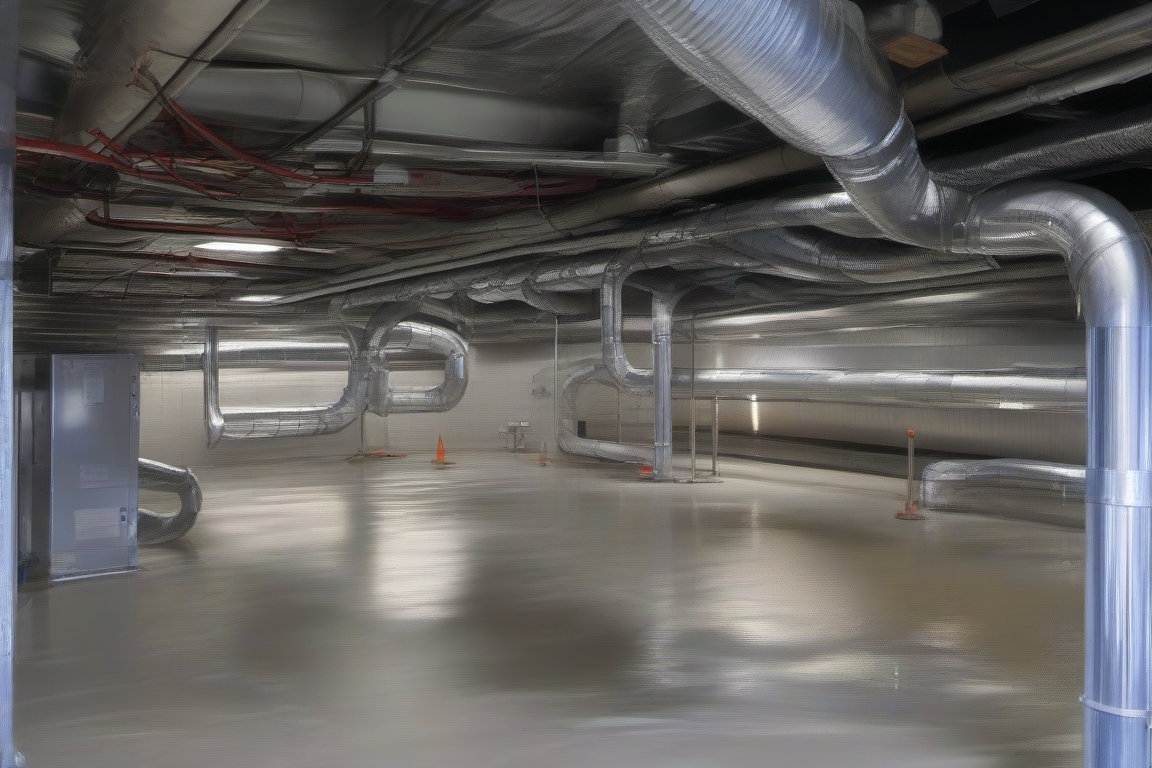The CSCS Section E Specialist – Cat 25 – HVACR Ductwork exam assesses your knowledge and understanding of safe practices related to the installation, maintenance, and dismantling of heating, ventilation, air conditioning, and refrigeration (HVACR) ductwork systems.
This guide will help you prepare for the exam by covering the key topics and safety considerations.
Be sure to take our CSCS mock exam and Cat 25 HVACR Ductwork practice questions before your exam day. They are free and you can use them as often as you like.
Newly Installed Plant and Systems
- Ensure the safety of newly installed but uncommissioned plant by locking off all valves and switches to prevent unauthorised operation.
- Leakage testing on newly installed ductwork systems should be conducted by a trained and competent individual.
- Access to risers (vertical shafts) should be controlled through a permit-to-work system.
- If you encounter a coloured wire protruding from an electrical plug, label the item as faulty and follow your company’s protocol for defective items.
Site Safety
- Position extension leads to avoid creating tripping hazards on construction sites.
- Do not attempt to extend temporary wiring for power tools; wait until an officially sanctioned power supply is established.
- Battery-operated rechargeable tools do not require portable appliance testing.
- Place liquefied petroleum gas (LPG) cylinders outside the cabin when supplying an appliance in a site cabin.
- Position the exhaust of an engine-driven generator outside the building if it needs to be operated indoors.
- In the event of an oil spill without absorbent material, restrict access to the area and notify your supervisor.
Health and Safety
- If someone experiences headaches or sickness while using a solvent-based ductwork sealant, move them to fresh air and ensure they rest.
- When welding on in-situ galvanised ductwork, implement fume extraction systems.
- Welding poses the greatest health risk when jointing plastic-coated metal ductwork due to the release of harmful fumes.
- If you find a hypodermic syringe, wear gloves, use grips to relocate it safely, and report the discovery.
- When cutting pre-insulated aluminium or tin ductwork with fiberglass, use respiratory protective equipment and tin snips.
- Provide protective screens to shield from welding flash.
Lifting Operations
- Document the safe lift sequence in a method statement during the planning of a lifting operation.
- The safe working load (SWL) of lifting equipment represents the maximum safe working load.
- Ensure that the SWL is clearly indicated on all lifting equipment.
- If you notice a frayed lifting cable on a material hoist, refrain from using the hoist and notify about the issue.
Drilling and Power Tools
- Wear eye protection at all times when drilling, regardless of the conditions.
- When using a hammer drill, wear hearing protection, respiratory protective equipment, and eye protection in addition to a safety helmet and protective footwear.
Ductwork Installation and Maintenance
- After applying a solvent-based sealant, do not replace inspection covers and display no smoking signs.
- Before dismantling a ductwork run, evaluate the planned task and inspect its supporting structure.
- Use a trolley or manual handling tool to safely move a fan-coil unit over a distance.
- If you discover a manufacturing fault in a fire damper, refrain from fitting it and report the fault.
- If you observe buckling in a genie hoist while in use, lower the load immediately.
- Ensure adequate ventilation when performing solvent welding on plastic ductwork.
- Before using a cleaning agent or biocide in a ductwork system, review the COSHH assessment, conduct a risk assessment, and prepare a method statement.
- When accessing ductwork, consider the space constraints and check the durability of the ductwork and its supports.
- Review the COSHH assessment before painting the exterior surface of ductwork.
- Before dismantling waste-extract ductwork, verify the presence of a certificate of cleanliness.
Working at Heights
- Before using a ladder, ensure it is properly secured to prevent sideways movement or sliding.
- Extend the restraint mechanism fully for safe use of a stepladder.
- Follow the manufacturer’s recommended height for a freestanding mobile tower.
- After boarding a mobile tower platform, secure the access hatch to prevent falls.
- Evacuate all individuals and equipment from the platform before relocating a mobile tower.
- Conduct a risk assessment before commencing any roof-related tasks.
- Edge protection is installed to prevent people and materials from falling.
- Folding stepladders are suitable for performing short-term tasks.
- If working on a platform without edge protection above an open stairwell for example, delay starting work until guard-rails and toe-boards are installed.
- When working on a flat roof with a low parapet, request the installation of double guard-rails and a toe-board to minimize the risk of falling.
- For installing ceiling-mounted ductwork across a large open space, use a mobile tower for stable and secure access.
- When constructing a mobile tower, consider the hazard of overhead service cables.
By studying and understanding the information presented in this guide, you will be well-prepared for the CSCS Section E Specialist – Cat 25 – HVACR Ductwork exam, ensuring your knowledge of safe practices in this field.

